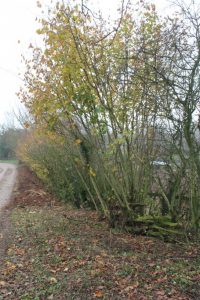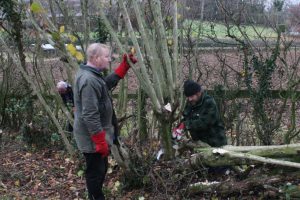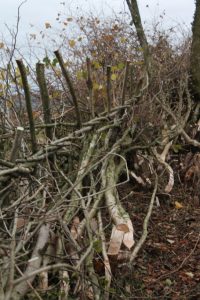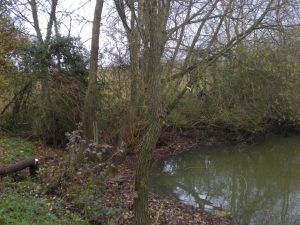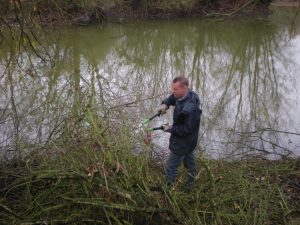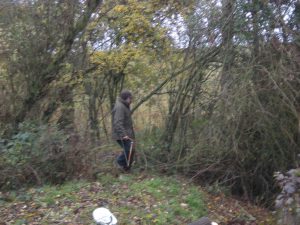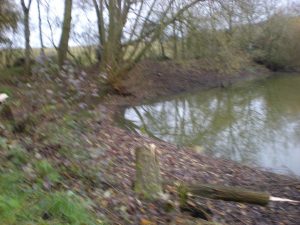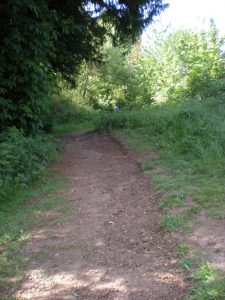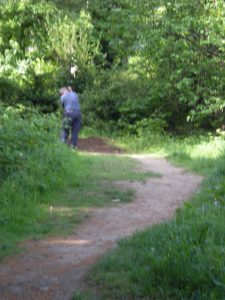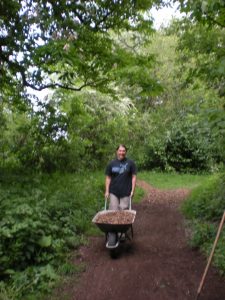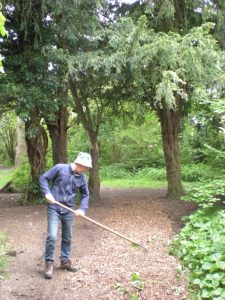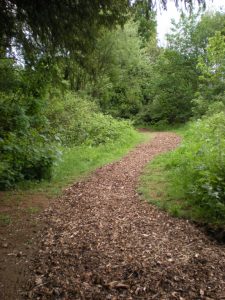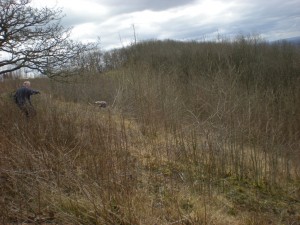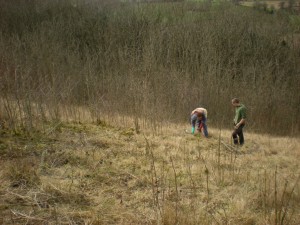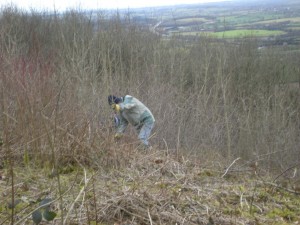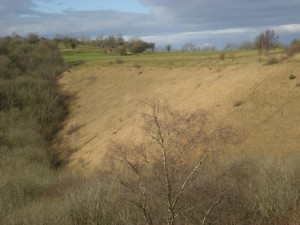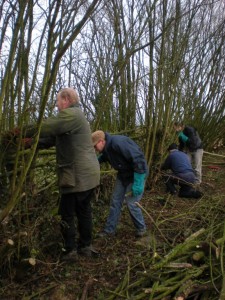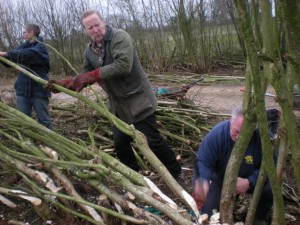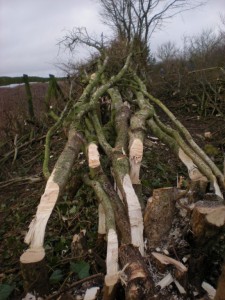With a group of 6 volunteers we helped lay part of a hedge at Ruskin Mill farm, Nailsworth. This is a continuation of previous tasks in the early part of the year on a long stretch of mixed species hedge that runs the length of the track leading from Hay lane to the farm. Students/apprentices at Ruskin College have also been contributing to the task of laying this hedge.
We began with clearing any dead material or growth that would inhibit laying the main trees and shrubs. This section was mostly hazel with blackthorn at the back of the hedge. The group had a mix of experienced, limited experience and novice hedgelayers, who had a chance to be involved in the whole process as we managed to stake and add binders(heatherings) to part of the hedge.
The aim is to be able to complete the whole hedge this season so we are hoping to fit another task in in February.

